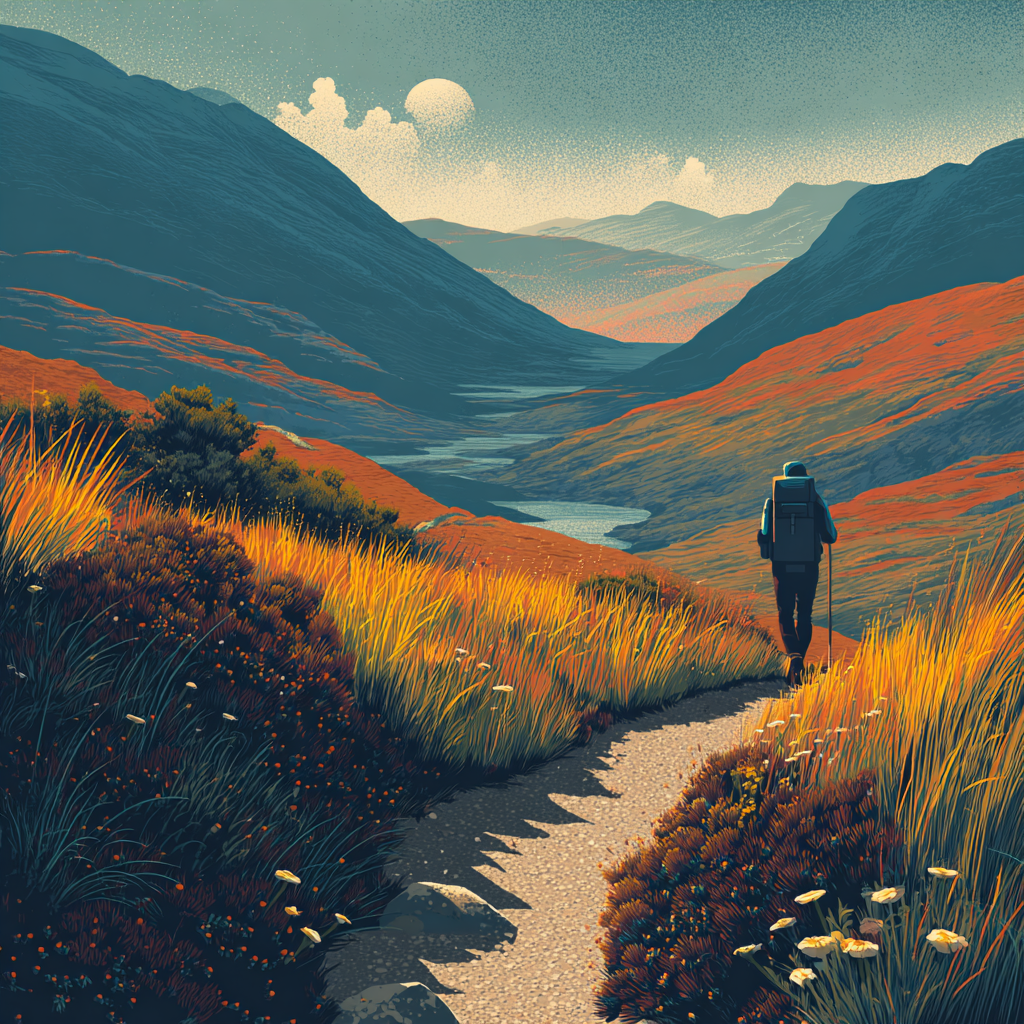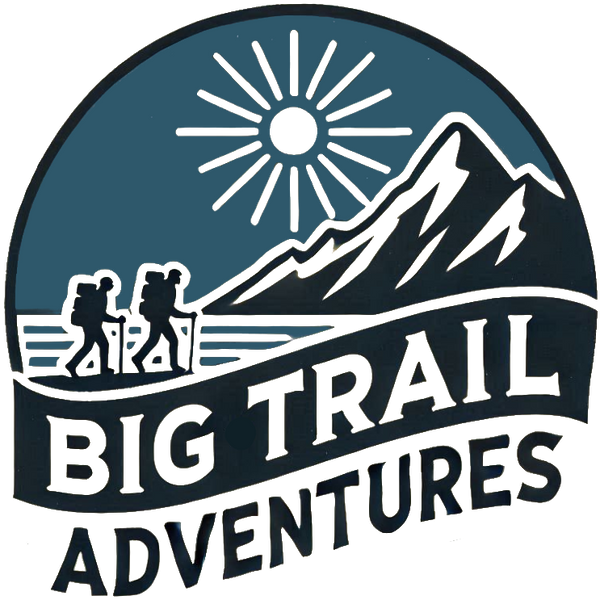
Walking the Cape Wrath Trail with Magnus Ross
Share
Today we talk to Magnus Ross, fresh back from the Cape Wrath Trail — often described as the toughest trail in the UK. It’s wild, remote, and in places there’s no trail at all. Magnus finished just a few days ago and joins me to talk about bogs, bothies, golden eagles, and what happens when the weather turns against you in the far north of Scotland.
What is the Cape Wrath Trail?
“It’s not an agreed-upon exact trail — that’s the first thing to understand. There are many possible routes, but the general idea is to go from Fort William to Cape Wrath over roughly two weeks.
“The way I went was about 350 km. It’s not a ‘trail’ in the way some others are — it’s not signposted and much of it isn’t even on a path. You have to navigate your own way over moorland and between valleys. So in some ways, it’s more of a vibe than a trail.”
What drew you to it?
“I’ve done a lot of shorter trails, but not many big multi-day routes. I’d love to try something huge in future — maybe the Pacific Crest Trail or Appalachian Trail — but those require confidence with remoteness and self-sufficiency.
“The Cape Wrath Trail felt like the perfect testing ground: more serious than most UK trails but still within reach. Plus, it’s a stunning part of the country I hadn’t really explored before.”
Planning and preparation
“I spent two or three months planning in spare moments — spreadsheets for my gear, my daily stages, and food resupplies.
“I sent boxes to two stops — a hotel and a hostel — spaced about three days apart. That was vital, because the shops are tiny and unpredictable. Without those parcels, I’d have been eating tins of beans!
“I loosely followed the stages from the Walk Highlands route but combined a few to make longer days. That meant some days were exceptionally tough and others much easier. If I did it again, I’d even those out.”
The toughest day
“My longest day was just under 60 km with about 2,000 m of ascent — around 11 hours of walking. The last third became a bit of a grind. You’re thinking about your bed and your food instead of the views. It turns from an adventure into a personal battle.”
Going solo
“I started with a friend, Alex, for the first three days. After that I was on my own for four, then my dad joined for the last couple of days with his camper van.
“Going solo was brilliant once the weather lifted. The day Alex left was the first of four days of sunshine and calm. At first, I was nervous, but it quickly turned into something energising.”
Navigating the wild
“My Coros watch was my main navigation tool — I had GPX files loaded and it never failed. I also carried the Harvey’s Cape Wrath Trail maps, which I studied each evening to see what was ahead.
“Sometimes the GPX track would suddenly veer off a nice path into a bog or hillside and I’d think, surely not! But that’s part of it — you’re often off-path, crossing open moor or weaving through valleys.”
Bogs, paths, and the Scottish terrain
“There were three truly awful bog sections — around Mao Bhuidhe Bothy, near Inchnadamph, and between Kyleskuand Riconich. Each lasted one to two hours.
“Online you read horror stories that make it sound like you’ll be knee-deep all day, but that’s not true — at least, it wasn’t for me. I only had three days of rain. Still, even the ‘good’ paths in Scotland can be rough — sometimes worse than the bog!”
The beauty of the trail
“There were moments that stopped me in my tracks.
-
Around Noida — golden light, narrow valleys, mountains glowing as the day went on.
-
The Great Wilderness — big slabs of rock, low cloud, and stags calling through the mist.
-
The final stretch near the coast — waterfalls, open rock, and a bothy by a loch that was honestly the most perfect I’ve seen: clean, peaceful, with a waterfall behind it and mountains all around.”
Sleeping wild: bothies, tents, and beds
“I mixed it up — two nights in bothies, two wild camping, two in accommodation, and two in my dad’s van.
“I’d actually like to camp more next time. Camping is the most immersive — you feel truly detached from everyday life. Bothies are a lovely middle ground: dry, social, and full of character.”
“At 2 a.m. one night, I stepped out of the bothy and saw the Milky Way. True darkness like that is rare — total silence, the river beside you, and no light anywhere.”
Kit and pack weight
“My base weight was about 5.2 kg — tent, mat, sleeping bag, stove, spare clothes, tech, first-aid kit. With food, it went up to around 8 kg.
“I eat fairly whole-food meals, so my food was heavier — maybe 3–4 kg for three days. I rarely carried much water because streams are everywhere.”
Drinking from streams
“I had a small LifeStraw filter, but I barely used it. This is not medical advice, but if you’re high up, away from farmland, and the water’s clear and fast-flowing, you’re probably fine. I’ve never got ill yet!”
Gear you love
“I’ve got a green T-shirt from a mountain marathon about seven years ago. It’s faded and threadbare, but it’s my lucky charm — every big adventure, that’s the shirt I wear.”
Lows and weather
“My lowest point was a cold, wet day near the end — rain all day, bogs everywhere, nothing to see. When you’re soaked and shivering, it’s hard to keep spirits up. But there were no real meltdowns. The weather makes or breaks this trail.”
Footwear choices
“I wore Hoka trail shoes — great comfort, but the tread was worn, so I was slipping all the time. My friend had deep-lugged Salomons, better for bogs but harsh on hard tracks.
“The ideal would be a hybrid: cushioning for long days, grip for the rough stuff. The terrain changes constantly — you can’t win on every surface.”
Solitude and the mind
“The solitude was energising. After a few days alone, I got into a flow — walking, camping, cooking, just existing. I turned my phone off and stopped listening to music.
“When I accidentally turned it back on and saw a flood of notifications, I hated it. It broke the spell. It’s amazing how many things fill your head day to day. Out there, it’s just you, the trail, and what’s right in front of you.”
Encounters on the trail
“I saw maybe two or three people a day — just enough. One moment stuck with me: I was trudging through fog, tired, and out of nowhere this Kiwi guy appeared through the mist, grinning, poles in hand, saying, ‘Isn’t this incredible?’ His energy completely lifted me.”
“The trail provides. The Kiwi guy proved it.”
Wildlife highlights
“I saw a pair of golden eagles, which was incredible — they lifted off and filled the sky. I also saw dolphins off the coast, a slow worm, countless frogs, and what felt like a million stags. Their roars add atmosphere — though slightly unsettling when you’re camping alone!”
The tricky finish
“I didn’t quite reach the Cape Wrath Lighthouse. The MOD firing range was active that day — they posted the closure notice only three days before. So I stopped about 7 km short.
“It’s frustrating, but it’s 97% complete — I’ll take that. Getting away from the end is a challenge too. Transport options are limited; it really is the end of the world.”
Reflections and advice
“The Cape Wrath Trail gave me confidence. I proved I can plan, adapt, and stay calm through discomfort — all good preparation for bigger adventures ahead.
Advice?
-
Pack light. Then go lighter.
-
Don’t chase mileage at the expense of enjoyment.
-
Expect contrasts — bog then beauty, rain then sunshine, frustration then awe. That’s what makes it special.”
“One moment you’re knee-deep in mud. The next, you drop into a gorge with waterfalls and wildflowers — an oasis. That contrast is what makes the Cape Wrath Trail unforgettable.”
